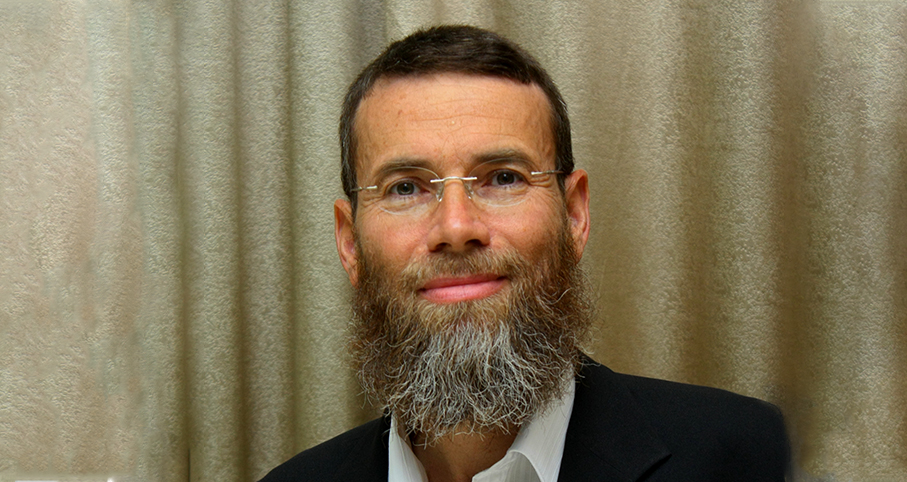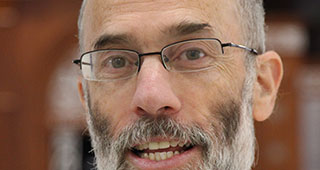Beit Midrash
- Sections
- Chemdat Yamim
- P'ninat Mishpat
- Sections
- Chassidish Stories and Great Rabbis
- The Life of Tzaddikim
Mordechai Yaakov Breish was born in 1895 in Skohl, Galicia (today, Ukraine) to a family of Belzer chassidim. During the 1920s he began his career as a rabbi in Galicia, and toward the end of the decade he accepted a position as the rabbi of Disbourg, Germany. That is where he wrote his first sefer, on the topic of eiruvin. A few years later, after the ascendance of the Nazis (ysv"z), he moved to France. He was there just a few years and was fortunate that before the War, he accepted a position in Zurich, Switzerland, where he served as rabbi of the Charedi community for over forty years.
In the years after World War II, Europe had only a relatively small remnant of a Jewish community, compared to pre-War Europe, as, of course, 6 million were murdered and most of the survivors left the continent for Israel or America. In Continental Europe (excluding England), few poskim survived and remained after the War. I can think of only two works of high-level p’sak halacha that were produced there at that time (apologies to any others I forgot): R. Yechiel Yaakov Weinberg’s S’ridei Eish and Rav Mordechai Yaakov Breish’s Chelkat Yaakov. Rav Breish was indeed a central figure, both communally, in Zurich and regionally, and in the world of scholarship. Through his large family, he became connected through marriage with some of the most prestigious families of the time, including that of the Rav Y.Y. Weiss and the Soloveitchik dynasty.
Rav Breish ruled on many issues affecting a Jewish community that was not only trying to recover from the Holocaust but was also dealing with the ravages of assimilation and intermarriage. However, as far as contemporary issues, his major contributions seem to be in the field of new (from the perspective of the 20th century) technologies, especially electrical devices and medical questions. For example, his Orach Chayim section has responsa on various uses of "Shabbat clocks," Hagomel for air travelers, berachot on "eating" through a tube, vending machines on Shabbat, and use of a refrigerator on Shabbat.
Rav Breish was not so famous for his contribution to the field of monetary halacha. However, his well-written teshuvot touch, in addition to standard age-old matters, on some interesting contemporary issues or post-war related issues. A few examples include buying previously Jewish-owned sefarim from the Czechoslovakian government, what to do with unclaimed property after the War, and guidelines on the concept of dina d’malchuta dina (the law of the land is binding).
Since Rav Breish’s death in 1976, much has changed in the Jewish world and discussion on newer technologies replace those on formerly new technologies. However, we owe a debt of gratitude not only for his contributions to the survival and a certain measure of recovery of European Jewry, but for solid scholarship from which we still have much to learn in our times.

P'ninat Mishpat (802)
Various Rabbis
353 - Is Expensive Food for Sickness Included in Support?
354 - Historical View of Rav Mordechai Yaakov Breish (Chelkat Yaakov)
355 - Disqualifying a Dayan for Having His Lost Item Returned
Load More

P'ninat Mishpat: Normalizing an Agreement that Becomes Absurd
based on ruling 83069 of the Eretz Hemdah-Gazit Rabbinical Courts
Beit Din Eretz Hemda - Gazit | Sivan 5785

P'ninat Mishpat: Did Any Furniture Go to the Buyer? – part I
based on ruling 84093 of the Eretz Hemdah-Gazit Rabbinical Courts
Beit Din Eretz Hemda - Gazit | Kislev 5786

P'ninat Mishpat: Unsuccessful Transfer of Yeshiva – part IV
based on ruling 82138 of the Eretz Hemdah-Gazit Rabbinical Courts
Beit Din Eretz Hemda - Gazit | Nisan 5784






















